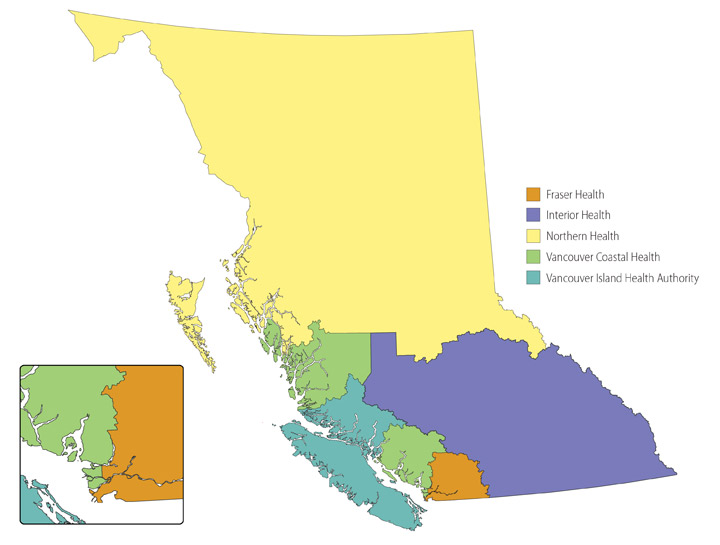Stay safe when a pandemic starts
We have strong global surveillance systems that can detect when a new virus has appeared that could cause a pandemic. If a pandemic is developing, the World Health Organization (WHO) provides information and advice on how to respond. Public info will also come from federal, provincial and regional health authorities.
On this page
- Know where to find information
- "Flatten the curve"
- Understand self-isolation
- Add to your emergency kit
- Find a pandemic buddy
- Plan for childcare
- Make a plan with your "bubble"
- Plan for vulnerable members
Know where to find information
It's important to stay informed when a pandemic is expected. You can do this by paying attention to the trusted sources below:
*X (formerly Twitter)
Regional health authorities
There are 5 regional health authorities in B.C. They govern, plan and deliver health-care services for their geographic areas. Your local regional health authority is another great source for information.
Map of regional health authorities

*X (formerly Twitter)
"Flatten the curve"
During COVID-19, and other past pandemics, one effective way of bringing them under control has been to “flatten the curve.” This means spreading out the number of new infections over a longer period of time so that our health care system is able to provide everyone with the care they need.
Once health authorities and governments learn how a new disease spreads, they can advise what steps people need to take to avoid coming into contact with it. The Provincial Health Officer might make certain steps mandatory by turning them into orders under the Public Health Act. It is important that individuals follow these orders, as well as the guidance provided by the Provincial Health Officer, the Ministry of Health and health authorities. Flattening the curve can only be accomplished by the actions of individuals.
Understand self-isolation
During a pandemic, people who are exposed to the disease may be required to self-isolate. This means staying home and avoiding situations where you could come in contact with others.
Self-isolation is an important measure in stopping the spread of a pandemic. The length of self-isolation depends on the illness.
Add to your emergency kit
You may have to self-isolate without much warning, and having food and supplies on hand will make this easier. This is where your emergency kit comes in handy.
When you learn that a pandemic is developing, it’s a good idea to check your emergency kit and restock it if necessary. You may want to add a few additional things, in case you must self-isolate and are unable to arrange the delivery of groceries or other supplies within a week. Buying far more than you need because you are concerned about shortages (panic buying) can result in other people not getting enough.
TIP: If you take regular medication, talk with your pharmacist about how you can maintain a consistent supply. Try to stay in the habit of refilling your prescriptions 1-2 weeks before they run out.
Find a pandemic buddy
It can be helpful to find someone outside your household to count on if you and your family must self-isolate. They could run errands for you, such as delivering your groceries or picking up medications:
TIP: If you live alone, you and your buddy may also want to agree to check in on one another every now and again just to make sure you’re doing well.
Plan for childcare
During a pandemic, schools and daycare facilities may be shut down as a measure to flatten the curve.
You may need to plan around this if you have children. Depending on your line of work, this could include making arrangements with your workplace to work from home or developing a modified work schedule.
Make a plan with your "bubble"
During a pandemic you may be asked to limit your contact with people and form a “bubble.” Your pandemic bubble will be the people you continue to have close contact with (usually the people you live with). This is another measure to help flatten the curve.
You may decide that you want other people to come and live with you during the pandemic (e.g. join your household bubble), such as family members or a close friend. If public health says it’s alright, you may also expand your bubble to include another family or close friends that don’t live with you.
The key thing to remember is all members of a bubble must be on the same page. For example, people from your bubble should not have close contact with people outside your bubble.
Staying with your bubble looks like this...
Two separate "bubbles" are keeping their distance from each other and avoiding close contact, which helps slow the spread of a disease.
When you leave your bubble...
By leaving your bubble and coming into close contact with someone outside your bubble, you may risk coming into contact with the disease and bringing it back to those you live with.
Plan for vulnerable members
If you have vulnerable members in your bubble, it is important to make a plan to keep them safe. For example, if members of your bubble are at higher risk of becoming seriously ill due to their age or health conditions, you should consider keeping your bubble small.
You should also plan to support the self-isolation of vulnerable members of your bubble. One example would be having a delivery plan for groceries and essentials.
